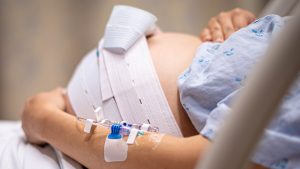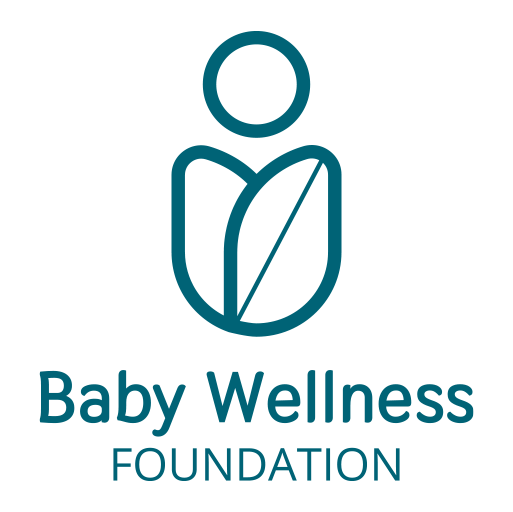Approfondimenti scientifici
Modes of Birth: Between Biology, Emotions, and Obstetric Choices
Childbirth is a biological and psychological event of extraordinary complexity (Klaus et al., 1993). This multifactorial physiological process involves a complex interaction between endocrine, neurobiological, and muscular systems, and it determines not only the physical birth of the newborn but also the initiation of important psychosomatic processes in both mother and child.

The Main Modes of Birth
The two main modes of birth are:
- Vaginal birth, which may occur spontaneously or be induced
- Cesarean birth, which is a surgical procedure
These profoundly influence the maternal experience, modulating stress, pain perception, and the neuroendocrine response, and they affect the establishment of the mother–infant bond. Furthermore, the type of birth determines the newborn’s first contact with the maternal microbiota, with long-term implications for immune and metabolic health.
Understanding how each mode of birth affects these physiological and psychosomatic aspects is essential to optimize perinatal well-being and obstetric support strategies.
The Neonatal Experience of Birth
The newborn experiences birth as a critical and intense transition involving numerous physiological and sensory adaptations essential for survival and development. During labor and delivery, the newborn is exposed to mechanical, chemical, and environmental stimuli that activate crucial neuroendocrine responses. Uterine contractions and compression within the birth canal promote drainage of pulmonary fluids, preparing the lungs for the first breath. At the same time, pressure and tactile stimulation activate the autonomic nervous system, facilitating the transition from intrauterine to extrauterine life.
Birth exposes the newborn to the maternal vaginal and fecal microbiota, which colonizes the skin and mucous membranes, contributing to the maturation of the immune system.
From a neuropsychological perspective, passage through the birth canal and immediate contact with the mother stimulate the production of hormones such as oxytocin and endorphins, which modulate stress and promote early attachment.
Vaginal Birth: Natural and Induced
Spontaneous Birth
Spontaneous vaginal birth, defined as the physiological process occurring without pharmacological or surgical interventions, represents the natural paradigm of birth.
During this mode, the endocrine cascade orchestrated by the hypothalamus, pituitary gland, placenta, and uterus produces endogenous oxytocin, prostaglandins, and beta-endorphins, which support labor progression and modulate pain perception (Buckley, 2015).
From a psychosomatic perspective, natural birth stimulates the mind–body connection through the production of neuropeptides that induce states of calm, focused attention, and stress resilience. This optimizes the mother’s adaptive responses, facilitating the establishment of early bonding and neonatal well-being.
Induced Birth
Labor induction, an increasingly common practice, involves the use of pharmacological agents such as synthetic oxytocin or prostaglandins to initiate or accelerate labor when medically indicated.
Although induction may prevent perinatal complications, it alters natural physiology and can affect neuroendocrine modulation of pain and stress.
Psychosomatic studies show that early induction, especially if not well explained, may increase the mother’s sense of loss of control and anxiety, altering adaptive responses during labor and postpartum. Empathetic and informed management is therefore essential for every expectant mother.
Cesarean Birth: A Surgical Approach
Cesarean birth is a widely used medical procedure that offers a safe and planned alternative to natural birth.
In recent years, thanks to advances in surgical techniques and postoperative care, the cesarean has become increasingly refined, allowing women to experience birth in a calm and controlled way.
Today, it is possible to integrate cesarean delivery with practices that promote the emotional well-being of mother and newborn, such as immediate skin-to-skin contact and early breastfeeding. A multidisciplinary approach that includes psychological support and personalized recovery techniques helps make cesarean birth a positive and complete experience that supports the mother–child bond and overall well-being.
Epidural: Pain Management
Epidural anesthesia, widely used for labor pain control, involves the injection of local anesthetics into the epidural nerve plexus, blocking the transmission of nociceptive impulses.
Although effective in reducing physical pain, the epidural may interfere with natural neuroendocrine responses, such as endogenous oxytocin production, potentially altering labor progression and the perception of birth. From a psychosomatic perspective, pain reduction may decrease acute stress, but it may also modify the woman’s active involvement in the birth process, influencing the sense of control and the quality of the emotional experience. Informed choice and continuous support are therefore crucial.
Conclusions
The choice of birth mode, although influenced by essential clinical factors, must take into account the physiological, psychological, and social dimensions of the woman. The growing focus on a holistic approach reflects the awareness that birth mode is not only a medical event but a deeply lived experience that shapes the mother–infant relationship and long-term psychosomatic well-being.
Beck, C. T. (2004). Post-traumatic stress disorder due to childbirth: The aftermath. Nursing Research.
Buckley, S. J. (2015). Hormonal physiology of childbearing: Evidence and implications for women, babies, and maternity care. Childbirth Connection.
Halpern, S. H., & Douglas, M. J. (2011). Epidural analgesia and obstetric outcomes: A systematic review. American Journal of Obstetrics and Gynecology.
Lindeberg, S., et al. (2016). Epidural analgesia and labor progression: A systematic review. Journal of Perinatal Medicine.
Simpson, K. R., et al. (2017). Induction of labor: Current status and future directions. American Journal of Obstetrics and Gynecology.
Silver, R. M., et al. (2016). Cesarean delivery and postpartum depression: A review of the evidence. Clinical Obstetrics and Gynecology.
Stolzenberg, D. S., & Numan, M. (2011). Neurobiology of maternal behavior. Frontiers in Neuroendocrinology.
Villar, J., et al. (2006). Caesarean delivery rates and maternal and neonatal mortality in low-, middle-, and high-income countries: An ecological study. PLoS Medicine.
Waldenström, U. (2004). Labor pain relief and women’s satisfaction with childbirth: A review of the literature. Journal of Midwifery & Women’s Health.
